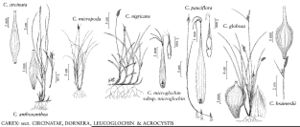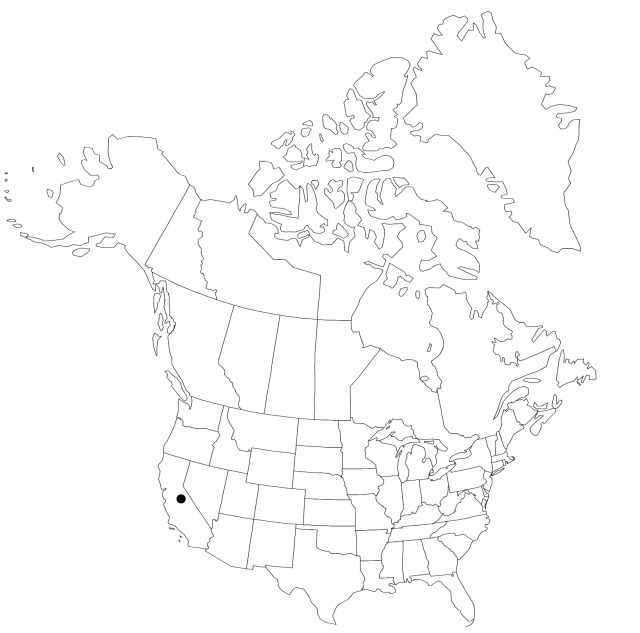Difference between revisions of "Carex globosa"
Proc. Linn. Soc. London 1: 259. 1845.
FNA>Volume Importer |
imported>Volume Importer |
||
| (3 intermediate revisions by 2 users not shown) | |||
| Line 6: | Line 6: | ||
|place=1: 259. 1845 | |place=1: 259. 1845 | ||
|year=1845 | |year=1845 | ||
| + | }} | ||
| + | |special_status={{Treatment/ID/Special_status | ||
| + | |code=F | ||
| + | |label=Illustrated | ||
| + | }}{{Treatment/ID/Special_status | ||
| + | |code=E | ||
| + | |label=Endemic | ||
}} | }} | ||
|basionyms= | |basionyms= | ||
| Line 11: | Line 18: | ||
|name=Carex umbellata var. globosa | |name=Carex umbellata var. globosa | ||
|authority=(Boott) Kükenthal | |authority=(Boott) Kükenthal | ||
| + | |rank=variety | ||
}} | }} | ||
|hierarchy=Cyperaceae;Carex;Carex sect. Acrocystis;Carex globosa | |hierarchy=Cyperaceae;Carex;Carex sect. Acrocystis;Carex globosa | ||
| Line 34: | Line 42: | ||
-->{{#Taxon: | -->{{#Taxon: | ||
name=Carex globosa | name=Carex globosa | ||
| − | |||
|authority=Boott | |authority=Boott | ||
|rank=species | |rank=species | ||
| Line 48: | Line 55: | ||
|publication title=Proc. Linn. Soc. London | |publication title=Proc. Linn. Soc. London | ||
|publication year=1845 | |publication year=1845 | ||
| − | |special status= | + | |special status=Illustrated;Endemic |
| − | |source xml=https:// | + | |source xml=https://bitbucket.org/aafc-mbb/fna-data-curation/src/2e0870ddd59836b60bcf96646a41e87ea5a5943a/coarse_grained_fna_xml/V23/V23_1001.xml |
|genus=Carex | |genus=Carex | ||
|section=Carex sect. Acrocystis | |section=Carex sect. Acrocystis | ||
Latest revision as of 20:37, 5 November 2020
Plants loosely cespitose; rhizomes arching to ascending, dark reddish brown to purplish brown, 0–12 mm, slender or stout. Culms 7–47 cm, scabrous distally; bases strongly fibrous. Leaf blades bright green, usually shorter than stems, 1.4–4.5 mm wide, herbaceous, glabrous abaxially, strongly scabrous to papillose adaxially. Inflorescences usually with both staminate and pistillate spikes; peduncles of basal spikes arching, elongate, slender; peduncles of terminal staminate spikes 2–5 mm; proximal cauline bracts leaflike, usually shorter than (occasionally slightly exceeding) inflorescences. Spikes: proximal pistillate spikes 2–4 (basal spikes 1–2); cauline spikes overlapping or somewhat separated, with 3–10 perigynia; terminal staminate spikes 10–25 × 1.5–3.2 mm. Scales: pistillate scales purplish brown or reddish brown, with similarly colored or narrow white margins, ovate, 4.2–6.5 × 1.8–2.1 mm, equaling or exceeding perigynia, apex obtuse to cuspidate (awned in some basal spikes); staminate scales ovate to lanceolate, 4.2–7.6 × 1.8–2.1 mm, apex obtuse to acute or short-awned. Anthers 2–3.3 mm. Perigynia green, 12–20-veined conspicuous to at least mid body, globose to obovoid, (3.5–)3.8–5 × (1.6–)1.8–2.3 mm; beak straight, pale green, often tinged with dark reddish brown near apex, (0.5–)0.7–1.4 mm, ciliate-serrulate, apical teeth 0.2–0.3 mm. Stigmas 3. Achenes brown, globose to obovoid, round to obtusely trigonous in cross section, 1.9–2.7 × 1.6–2.3 mm.
Phenology: Fruiting mid Apr–late Jun.
Habitat: Moist, shaded, acidic and serpentine slopes and stream banks in redwood, cypress, pine, and oak forests
Elevation: 90–1500 m
Discussion
Selected References
None.

